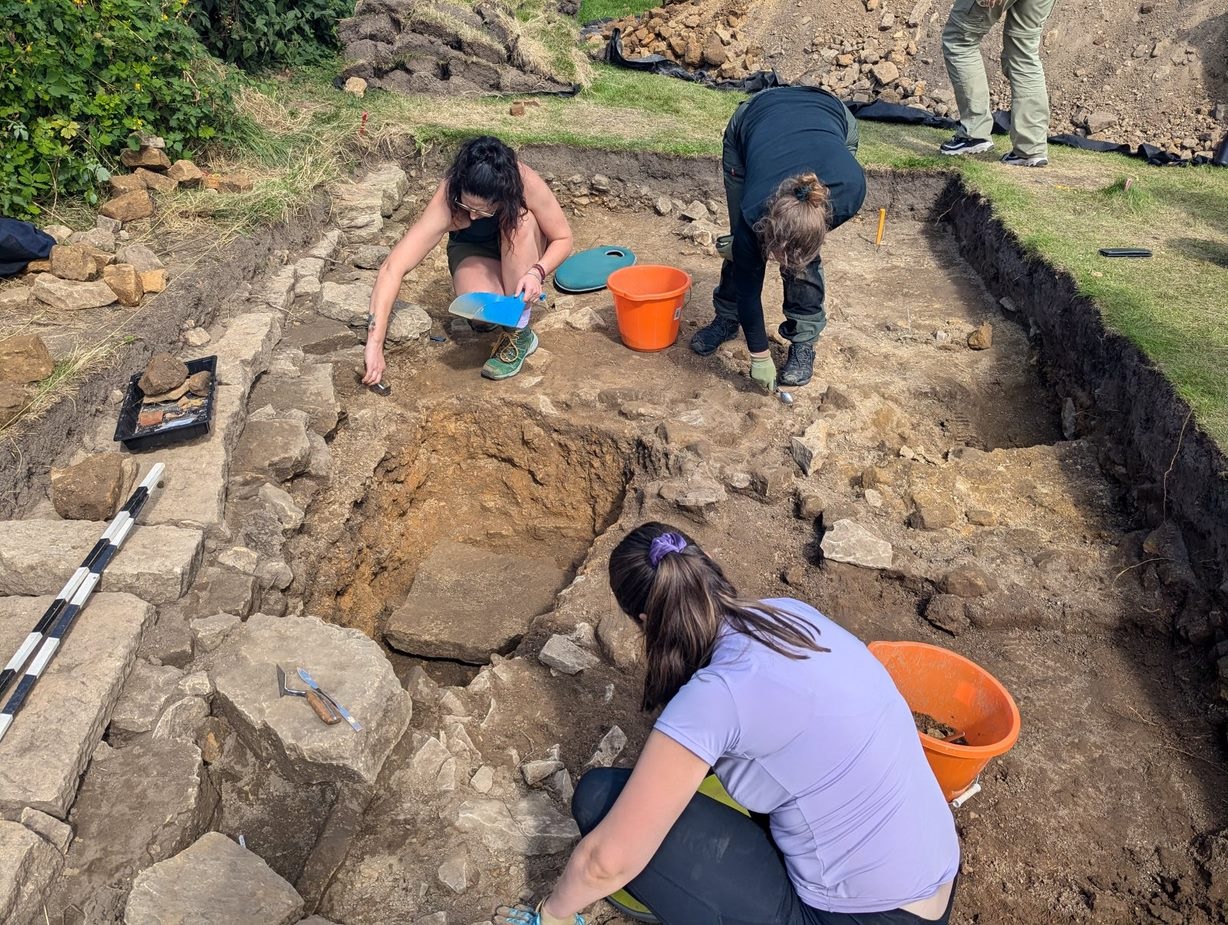Excavations by the Huttons Ambo History Group and Ethos Heritage CIC have uncovered traces of two substantial Medieval structures at Huttons Ambo in North Yorkshire, England.
The village is first mentioned in the Doomsday and lends its name to unglazed storage jars that were produced locally during the Medieval period.
Previous excavation in 2023 uncovered Roman and Medieval pottery, building materials, animal bones, and objects from the Bronze and Neolithic periods, confirming human occupation around the village from at least 6,000 years ago.
According to a press statement by Ethos Heritage CIC, the lastest season of excavations have found a large Medievel building that is possibly associated with a nearby fortified manor from the 13th century AD.
Archaeologists also uncovered several large postholes and burnt daub, indicating the presence of a second structure made of wood with a plastered exterior that shows signs of fire damage. Alongside these building remains, a significant amount of 13th-century pottery was found, as well as various metal artefacts, including a buckle dated to around AD 1250.
According to Ethos Heritage CIC, the second building likely dates from the 15th century and appears to have been occupied until the early part of the 18th century. The building was constructed of recycled stone, including a window arch dating to the 12th century.
Significant quantities of Medieval and Post-Medieval pottery were found in situ at the second building, along with metal artefacts and butchered bones, suggesting that the site was a prosperous rural residence for nearly 250 years, yet no historical records of this building exist.
In addition, the researchers have found traces of Iron Age and Roman activity, indicated by a large bank and ditch, alongside large amounds of ceramics.
Rianca Vogels, the lead archaeologist for the project, highlighted the unique value of this community-oriented approach, stating,: “This project allows the local community and our participants from all over the world to explore a well-preserved landscape that has cast new light on the development of the village.
The discovery of three previously unknown sites cast new light on how villages in Yorkshire developed over time into the vibrant communities they are now. The sites we found and what function they have is still a mystery and we hope that the excavations we will be running next summer will provide some of the answers.”
Header Image Credit : Ethos Heritage CIC
Sources : Ethos Heritage CIC





